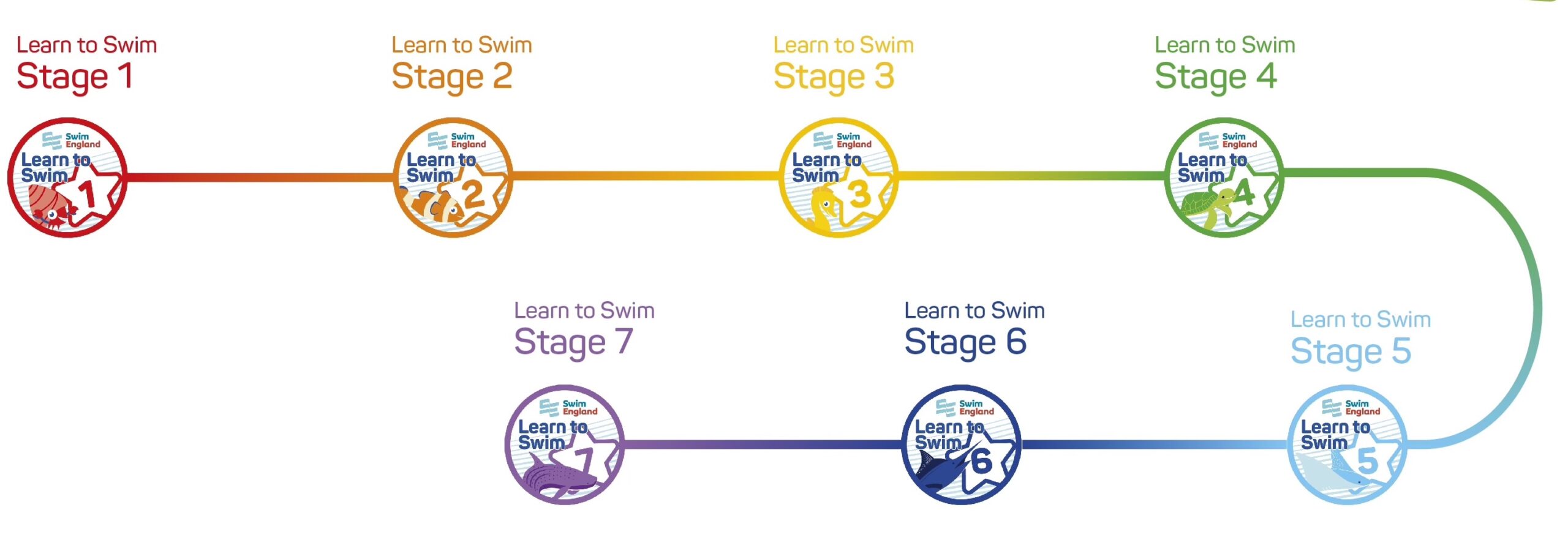



Child Classes
We follow the Swim England Learn To Swim framework Stages 1-7. The awards are designed to help children develop the essential skills they need to become confident and competent swimmers. Each progressive stage builds on the skills learned in the previous stage and are designed to help children learn a wide range of aquatic skills.





Stage 1
| Enter the water safely. |
| Swim forwards for a distance of 5 metres. |
| Swim backwards for a distance of 5 metres. |
| Move sideways for a distance of 5 metres, feet may be on or off the floor. |
| Scoop the water and wash the face. |
| Be comfortable with water showered from overhead. |
| Move from a flat floating position on the back and return to standing. |
| Move from a flat floating position on the front and return to standing. |
| Push and glide in a flat position on the front from a wall. |
| Push and glide in a flat position on the back from a wall. |
| Give examples of two pool rules. |
| Exit the water safely. |
Stage 2
| Jump in from poolside safely. |
| Blow bubbles a minimum of three times rhythmically, with nose and mouth submerged. |
| Move from a flat floating position on the back and return to standing without support. |
| Move from a flat floating position on the front and return to standing without support. |
| Push from a wall and glide on the back – arms extended. |
| Push from a wall and glide on the front – arms extended. |
| Swim on the back for 10 metres, arms over water recovery. |
| Swim on the front for 10 metres, arms over water recovery and an understanding of breathing. |
| Perform a rotation from the front to the back, then return to standing |
| Perform a rotation from the back to the front, then return to standing. |
Stage 3
| Jump in from poolside and submerge. |
| Sink, push away from wall and maintain a streamlined position. |
| Push and glide on the front with arms extended and log roll onto the back. |
| Push and glide on the back with arms extended and log roll onto the front. |
| Travel 5 metres on the front, perform a tuck to rotate onto the back and return on the back. |
| Fully submerge to pick up an object. |
| Correctly identify three of the four key water safety messages. |
| Push and glide and swim 10 metres on the back (competent backstroke action). |
| Push and glide and swim10 metres on the front (competent over arm action & breathing to side) |
| Perform a tuck float and hold for three seconds. |
| Show and understanding of breaststroke. |
| Exit the water without using steps. |
Stage 4
| Perform a sequence of changing shapes (minimum of three) whilst floating on the surface and demonstrate an understanding of floating. |
| Push and glide from the wall towards the pool floor. |
| Kick 10 metres backstroke (one item of equipment optional). |
| Kick 10 metres front crawl (one item of equipment optional). |
| Kick 10 metres butterfly on the front or on the back. |
| Kick 10 metres breaststroke on the front (one item of equipment optional). |
| Perform a headfirst sculling action for 5 metres in a flat position on the back. |
| Travel on back and log roll in one continuous movement onto front. |
| Travel on front and log roll in one continuous movement onto back. |
| Push and glide and swim 10 metres, choice of stroke is optional to SE expected stroke standards. |
Stage 5
| Perform a flat stationary scull on the back. |
| Perform a feet first sculling action for 5 metres in a flat position on the back. |
| Perform a sculling sequence with a partner for 30-45 seconds to include a rotation. |
| Tread water for 30 seconds. |
| Perform three different shaped jumps into deep water. |
| Push and glide and swim 10 metres backstroke (performed to SE expected standards). |
| Push and glide and swim 10 metres front crawl (performed to SE expected standards). |
| Push and glide and swim 10 metres breaststroke (performed to SE expected standards). |
| Push and glide and swim 10 metres butterfly (performed to SE expected standards). |
| Perform a handstand and hold for a minimum of 3 seconds. |
| Perform a forward somersault, tucked in the water. |
| Demonstrate an action for getting help. |
Stage 6
| Give two examples of how to prepare for exercise and understand why it is important. |
| Sink, push off on side from the wall, glide, kick and rotate into backstroke. |
| Sink, push off on side from the wall, glide, kick and rotate into front crawl. |
| Swim 10 metres wearing clothes. |
| Push and glide and swim front crawl to include at least six rhythmical breaths. |
| Push and glide and swim breaststroke to include at least six rhythmical breaths. |
| Push and glide and swim butterfly to include at least three rhythmical breaths. |
| Push and glide and swim backstroke to include at least six regular breaths. |
| Push and glide and swim 25 metres, choice of stroke is optional (performed to SE expected standards). |
| Perform a ‘shout and signal’ rescue. |
| Perform a surface dive. |
Stage 7
| Push and glide and swim 25 metres backstroke (performed to SE expected standards). |
| Push and glide and swim 25 metres front crawl (performed to SE expected standards). |
| Push and glide and swim 25 metres breaststroke (performed to SE expected standards). |
| Push and glide and swim 25 metres butterfly (performed to SE expected standards). |
| Perform a movement sequence (linking skills with strokes and sculls) of one minute duration, in a group of three or more, incorporating a number of the following skills: Sculling: head first, feet first Rotation: forward or backward somersault, log roll Floating: star on the front or on the back, tuck float, create own Eggbeater: Moving, lifting one or both arms out of the water |
| Perform a sitting dive or dive. |
| Push and glide and swim 50 metres continuously using one stroke (performed to SE expected standards). |
| Push and glide and swim 100 metres, using a minimum of three different strokes (performed to SE expected standards). |
| Tread water using eggbeater action for 30 seconds. |
| Complete an obstacle course (using minimum of four objects) with feet off the pool floor throughout. |
